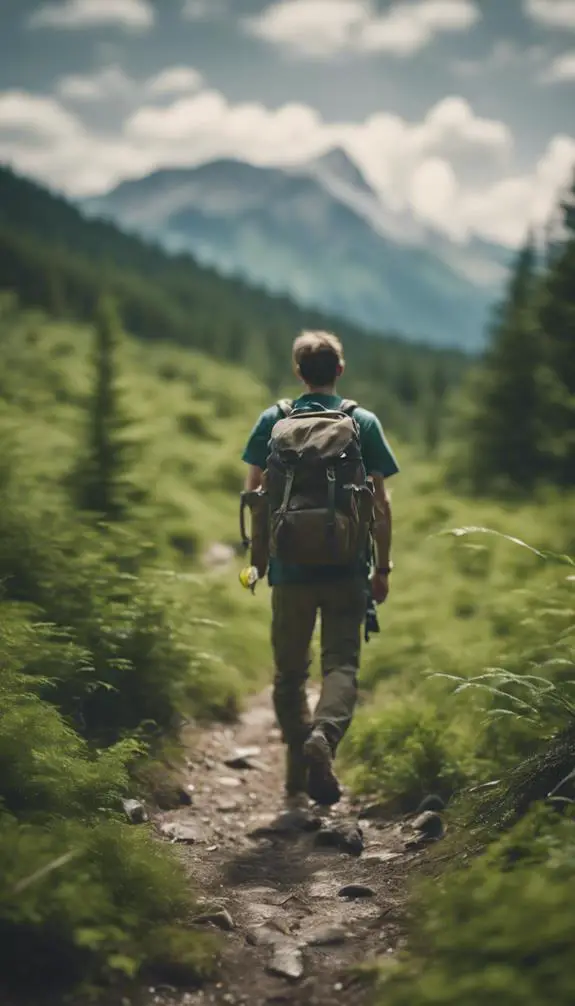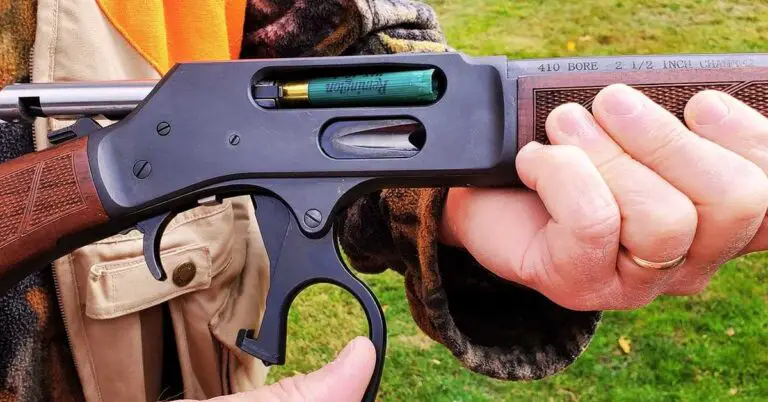As you prepare to venture into the wilderness, you're probably thinking, "What if something goes wrong?" The truth is, it's not a matter of if, but when. Whether you're a seasoned hiker or a beginner, accidents can happen to anyone. But with the right skills and knowledge, you can turn a potentially disastrous situation into a minor setback. You'll need to know how to respond to emergencies, find or purify water, and start a fire – and that's just the beginning. So, are you ready to learn the essential survival tips that could mean the difference between life and death?
Summary
- Always plan and prepare for a wilderness adventure by checking the weather, bringing essential gear, and knowing your limits.
- Pack a well-stocked first aid kit with wound care essentials, and know how to use them to respond to accidents.
- Find or create a reliable source of clean water, and purify it using boiling, water filters, or purification tablets to stay hydrated.
- Learn how to build a shelter that protects from harsh weather and wildlife, and know how to start a fire using reliable fire starters.
- Stay calm and focused by cultivating mental toughness, practicing mindful breathing exercises, and recognizing that mindset is vital in a survival situation.
Prepare Before You Go
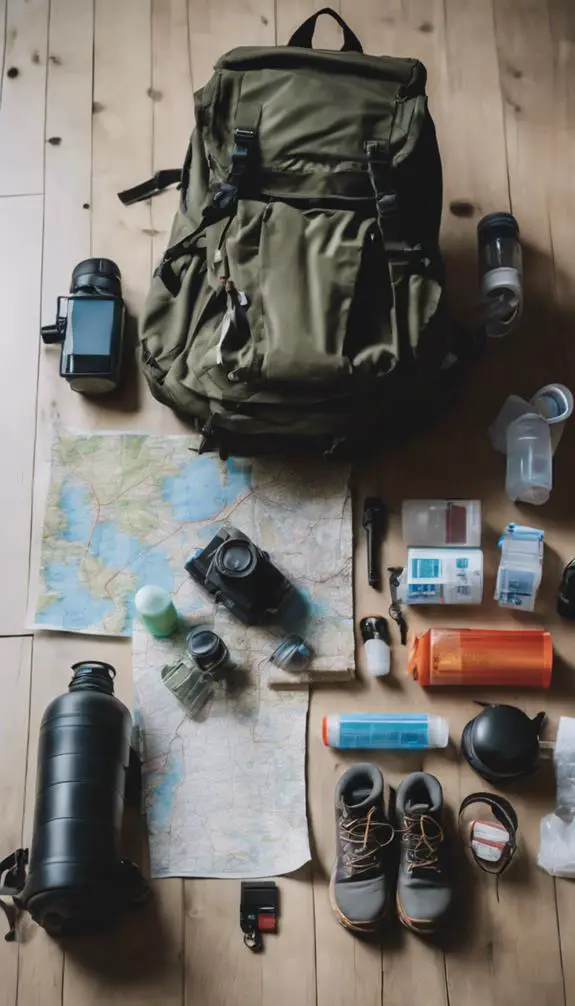
Before venturing into the wilderness, a well-stocked backpack can be your best friend.
But it's not just about packing the right gear – it's about being prepared for the unexpected.
That's where emergency planning comes in. Identify potential risks, such as inclement weather or getting lost, and develop a plan to mitigate them.
Check the weather forecast before you go and adjust your itinerary accordingly.
Bring a map, compass, and GPS device to stay on track.
Know your limits and don't take unnecessary risks.
By being proactive and planning ahead, you'll be better equipped to handle any situation that arises.
Choose the Right Gear
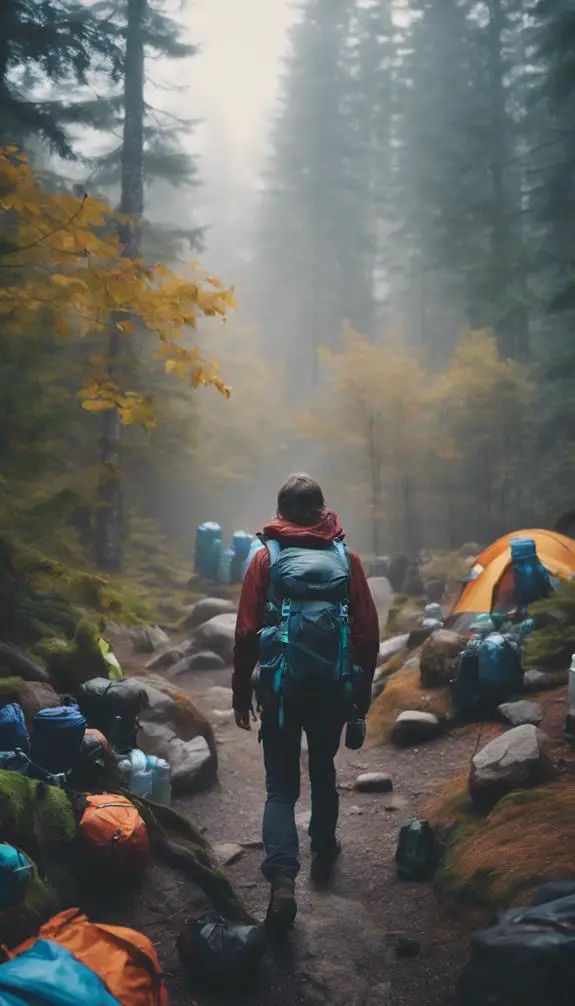
With your emergency plan in place, it's time to focus on the gear that'll keep you safe and comfortable in the wilderness.
You'll need a solid gear checklist to confirm you don't forget anything vital. Start by identifying the essentials: shelter, warmth, first aid, navigation, and hydration.
Then, prioritize items based on the terrain, weather, and length of your trip. Packing strategies are key – consider the 3-layer system for clothing, and pack multipurpose items like a pocket knife or space blanket.
Don't overpack, but don't skimp either. Remember, the right gear can mean the difference between a comfortable night's sleep and a miserable one. Take your time, and get it right.
Learn Basic First Aid
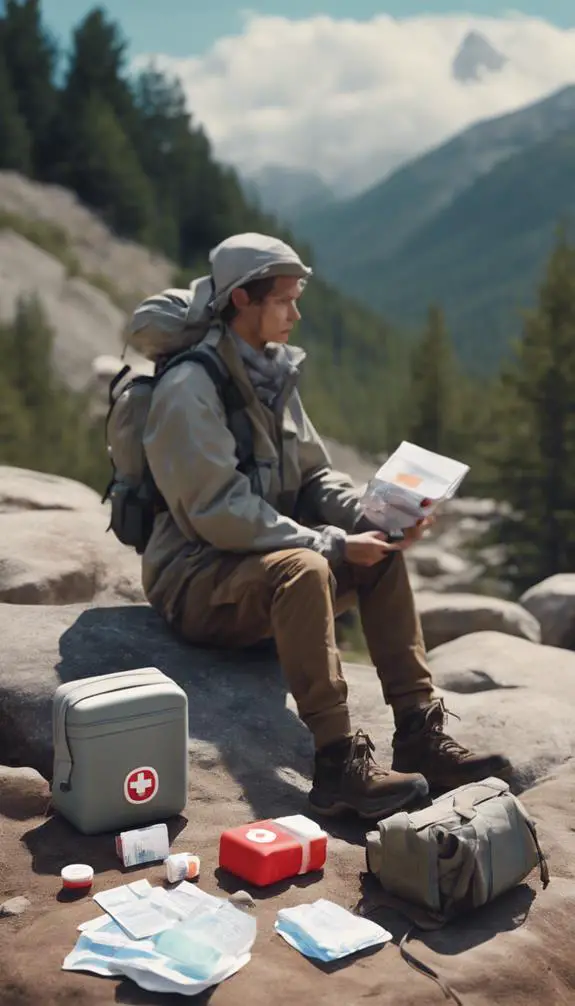
You'll need to know how to respond when accidents happen, so it's vital to learn basic first aid skills.
You'll want to master wound care essentials, including how to clean and dress wounds, and understand CPR fundamentals to save a person's life.
Wound Care Essentials
A first-aid kit isn't complete without wound care essentials, and knowing how to use them can mean the difference between infection and healing.
You'll need antiseptic wipes, antibiotic ointment, and bandages to treat cuts and scrapes.
When it comes to wound cleaning, you'll want to gently clean the area with soap and water to remove dirt and debris.
Pat the area dry with a clean towel to prevent bacterial growth.
Apply antibiotic ointment to reduce the risk of infection, then cover with a bandage.
Remember to change the dressing daily to promote healing and prevent infection.
CPR Fundamentals Explained
How quickly can you respond in a cardiac emergency?
In heart emergencies, every second counts. Knowing CPR guidelines can make all the difference.
Start by calling 911 or your local emergency number. Next, check the person's airway, breathing, and circulation (ABCs).
If they're unresponsive, begin CPR with 30 chest compressions followed by two rescue breaths. Continue this cycle until medical help arrives.
Remember to push hard and fast on the center of the chest, about 2 inches deep, at a rate of 100-120 compressions per minute.
Stay focused, and don't stop until help arrives. Your quick response can increase the person's chances of survival.
Basic Injury Assessment
Injury scenes can be chaotic, but staying calm and evaluating the situation quickly is essential in providing effective first aid.
You'll need to assess the injury's severity and type. Identify the wound type: is it a cut, burn, or fracture? Then, determine the injury degree: is it minor, moderate, or severe?
A minor injury might require basic wound cleaning and dressing, while a severe injury may need immediate medical attention. Use your best judgment, but don't hesitate to call for help if you're unsure.
Find or Purify Water
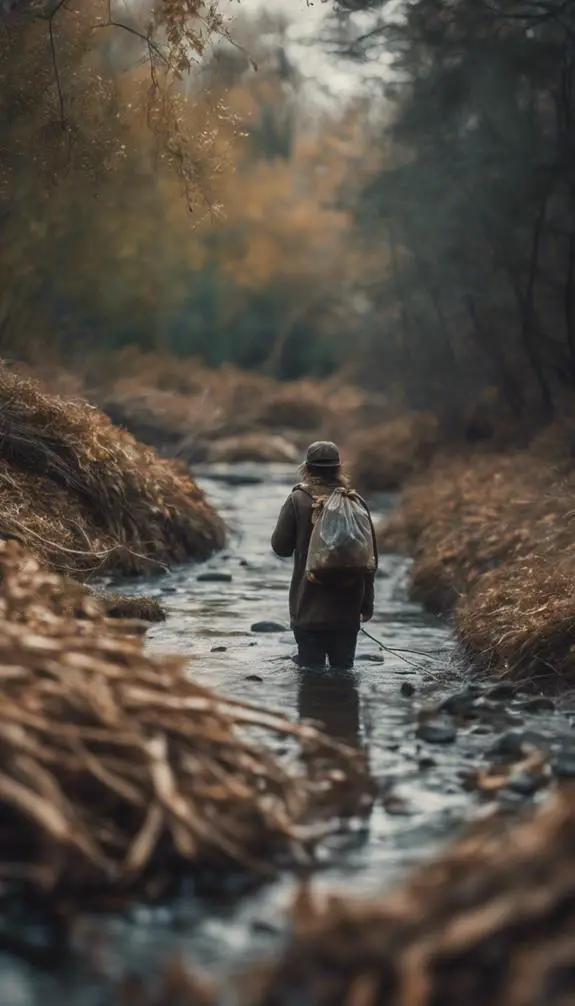
Frequently, dehydration becomes a major concern in survival situations.
You must find a reliable source of water to stay hydrated. When searching for water, look for streams, rivers, or ponds. If you're in a dry area, collect dew or rainwater.
Rain collection is an effective way to gather water, especially in urban areas. Use a tarp or plastic sheet to channel rainwater into a container.
Before consuming any water, test it for purity. Check for signs of contamination, such as unusual colors, odors, or floating particles.
If you're unsure, purify the water using boiling, water filters, or purification tablets. Always prioritize water testing to avoid waterborne illnesses.
Start a Fire Safely
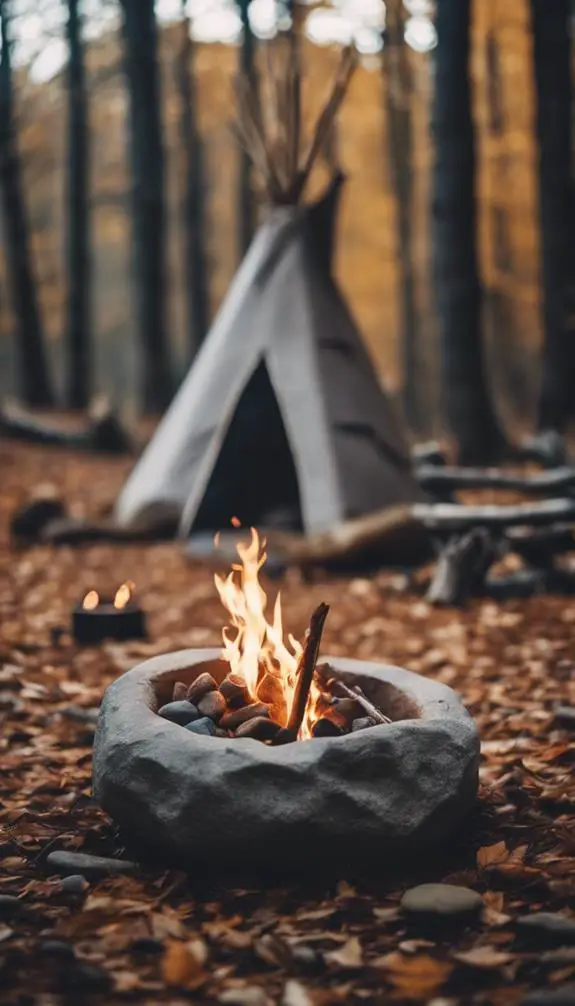
When you're in a survival situation, starting a fire safely is vital.
You'll want to choose the right fire starters, such as waterproof matches or a lighter, to guarantee a reliable spark.
Before you begin, prepare a safe area by clearing flammable materials and creating a fire ring or pit to contain the flames.
Choose Fire Starters
Because you'll likely rely on fire for warmth, light, and cooking in a survival situation, choosing the right fire starters is crucial.
You'll want tools that are reliable, easy to use, and can withstand harsh weather conditions. Fire pistons are a great option, as they generate sparks even in wet conditions.
Waterproof matches are another must-have, ensuring you can start a fire even in the rain. Consider including a lighter or ferrocerium rod in your kit as well.
These tools will help you get a fire going quickly and efficiently, even when you're exhausted or in a state of panic. By choosing the right fire starters, you'll be better prepared to face the challenges of a survival situation.
Prepare Safe Area
You've gathered your fire starters, now it's time to prepare a safe area to start a fire.
Look for a flat, dry spot away from trees, tents, and other flammable objects. Clear the area of leaves, twigs, and other combustible materials.
Create a fire ring or pit if possible, and surround it with rocks. Designate a safe zone around the fire, keeping a bucket of water or a fire extinguisher nearby.
Identify emergency exits in case the fire gets out of control. Keep a firebreak, such as a dirt path or a rock barrier, between the fire and any surrounding fuels.
Build a Shelter
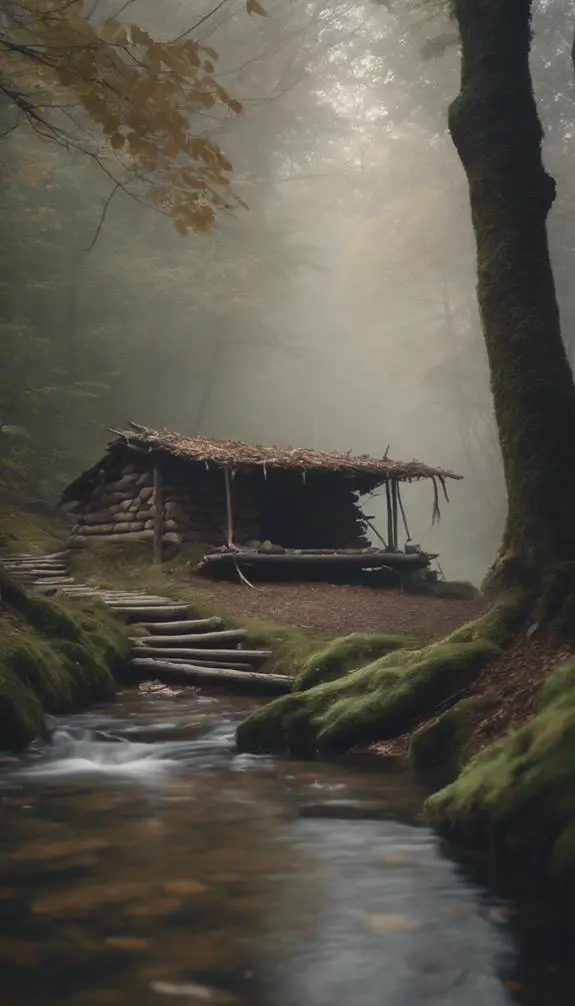
Get settled in ASAP by building a shelter that'll protect you from the elements.
You need a place to hide from harsh weather, wildlife, and potential threats. Choose a shelter location that's dry, flat, and clear of obstacles.
Look for natural formations like caves, rock overhangs, or hollowed-out logs. If you can't find one, create your own using branches, leaves, and other natural materials.
Prioritize shelter insulation to maintain body heat and keep the cold out. Use pine needles, grasses, or moss to line your shelter floor and walls.
Cover your roof with a waterproof layer like plastic or a space blanket. With a solid shelter, you'll be better equipped to face the challenges ahead.
Signal for Help

Now that you've secured a reliable shelter, it's time to focus on alerting potential rescuers to your location.
You need to signal for help, and you need to do it effectively. Smoke signals are a classic method, but they can be tricky to control.
Instead, try using whistle codes to convey your distress. Three short blasts on a whistle is a universal signal for help. Repeat this sequence every few minutes to increase your chances of being heard.
If you're near a body of water, use a mirror or shiny surface to reflect sunlight towards any passing aircraft or boats.
Remember to stay calm and patient – help will arrive eventually.
Navigate With a Map
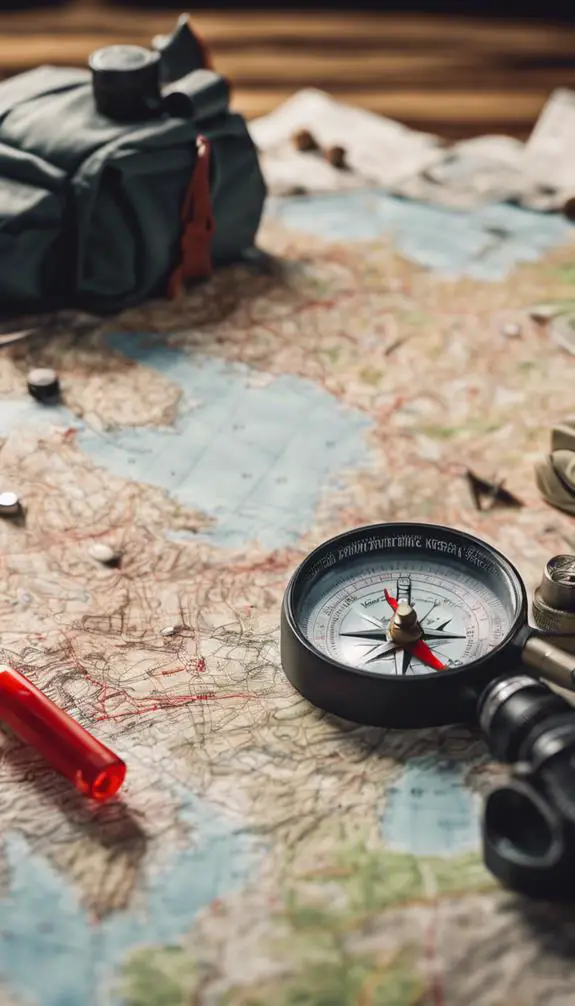
With a reliable shelter in place and a signal for help sent out, your next priority is navigation.
Now it's time to get familiar with your map. Start by orienting it to your surroundings, aligning the map's north-south lines with the Earth's magnetic field. This confirms the map accurately reflects your environment.
Next, plan your route, identifying the safest and most efficient path to your desired destination. Consider factors like terrain difficulty, water sources, and potential hazards.
Avoid Deadly Animals

Across various wilderness environments, you'll encounter a range of deadly animals that can pose a significant threat to your survival.
Be aware of your surroundings and know the habitats of snakes, such as rocky outcrops, long grass, and near water sources. When walking, avoid tall grass and brush, and wear protective clothing like boots and long pants.
In bear country, make noise while hiking to avoid surprising them. Keep a clean campsite, and store food and trash properly to avoid attracting bears.
In the event of a bear encounter, stay calm and follow established protocols. Remember, prevention is key, so educate yourself on the specific dangers present in your environment and take necessary precautions to avoid deadly animal encounters.
Stay Warm and Dry
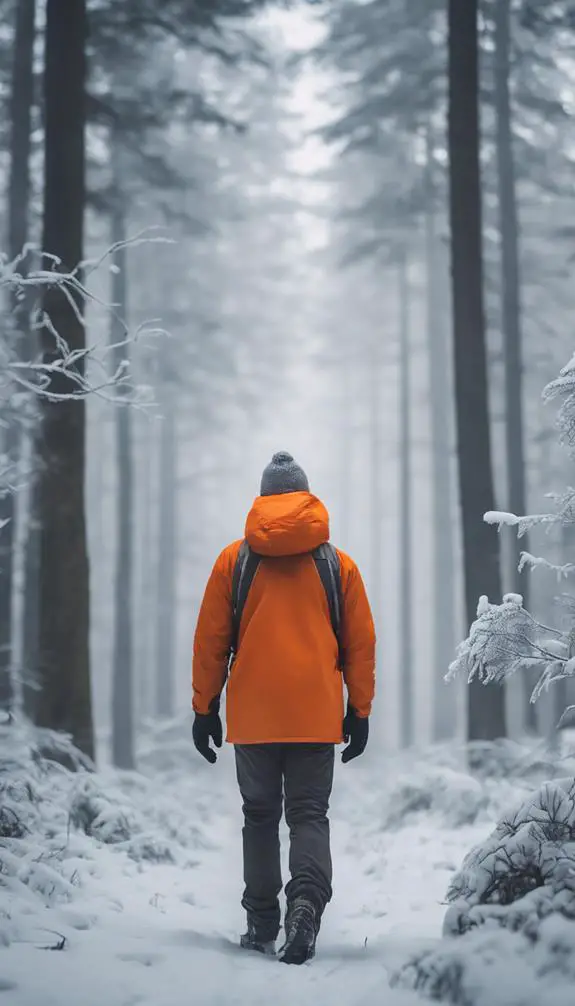
Hypothermia can sneak up on you quickly in cold, wet conditions, so prioritize staying warm and dry to maintain your energy and focus.
In cold weather, your body loses heat fast, especially when wet. To prevent this, dress in layers that wick moisture away from your skin.
Avoid cotton as it retains moisture, making you colder. Instead, opt for synthetic or wool clothing that helps with moisture management.
Remove wet layers and replace them with dry ones to stay warm. Find or create a dry shelter to protect yourself from wind and rain.
Find Food in the Wild

You'll need to find food to sustain yourself in the wild, but it's vital you do it safely.
Start by identifying wild edibles you can trust, like dandelion greens or cattails, to avoid poisoning yourself.
When foraging for berries, make sure you can positively identify the species and avoid lookalikes that can be deadly.
Wild Edibles Identification
During a wilderness survival situation, finding food in the wild can be a matter of life and death.
You'll need to learn wild edibles identification to stay alive. Start with wildcrafting basics: research the plants that grow in your area, their lookalikes, and any potential allergens or toxins.
Understand foraging etiquette: respect private property, only take what you need, and avoid over-harvesting.
Familiarize yourself with the shapes, colors, and textures of edible plants. Be cautious of plants that are past their prime or have been contaminated.
Always positively identify a plant before consuming it. Never rely on assumptions or guesswork – it's better to err on the side of caution.
With practice and patience, you'll become proficient in identifying wild edibles and staying nourished in the wilderness.
Finding Berries Safely
Berries are a sweet and nutritious treasure in the wild, but they can also be a deadly trap if you're not careful.
When foraging for berries, verifying berry identification is crucial to avoid mistakenly eating poisonous lookalikes.
Start by researching the berries that grow in your region and learn their distinct characteristics, such as shape, color, and size.
Practice foraging techniques like gently tugging on the berry to confirm it comes off the plant easily, and avoid berries that are past their prime or have been infested with insects.
Always trust your instincts – if a berry looks or tastes suspicious, don't eat it.
Stay Positive and Focused

Three key elements can make all the difference in a survival situation: the right skills, the right gear, and the right mindset.
Your mindset is vital, as it can be your greatest ally or your worst enemy.
To stay positive and focused, you need to cultivate mental toughness. This can be achieved through mental toughness training, which teaches you to stay calm under pressure and think clearly in chaotic situations.
Mindful breathing exercises can also help you relax and concentrate.
By combining these techniques, you'll be better equipped to handle the emotional and psychological challenges of survival.
Learn From Mistakes

Cultivating mental toughness is just the starting point.
You'll inevitably face setbacks and make mistakes. The key is to learn from them. Practice mistake analysis to identify what went wrong and how you can improve.
Don't be too hard on yourself, though – it's all part of the learning curve. Instead, focus on what you can do differently next time. Remember, every mistake is an opportunity to grow and become a better survivor.
Take ownership of your mistakes, and use them as stepping stones to success. By learning from your errors, you'll become more resilient, adaptable, and better equipped to handle the unexpected challenges that come with surviving in the wild.
FAQs
How Do I Handle a Bear Encounter During the Day Vs. at Night?
When encountering a bear, you'll want to know that daytime attacks are often defensive, while nighttime attacks are more predatory. During the day, stay calm and slowly back away; at night, be prepared to fight back aggressively, as bear behavior and attack strategies differ substantially.
Can I Use My Phone's GPS Without Cellular Service?
You can use your phone's GPS without cellular service, but GPS accuracy may vary. Download offline navigation apps and maps beforehand to guarantee reliable tracking, even in remote areas with no cell signal.
Are All Types of Moss Safe to Use for Water Filtration?
You'll need to identify the moss variety correctly, as not all mosses are safe for water filtration. Research moss identification guides to recognize safe species like Sphagnum or Hypnum, which can effectively remove impurities from water.
What if I'm Allergic to Bee Stings in a Survival Situation?
If you're allergic to bee stings, you'll need to act fast in a survival situation. Carry an EpiPen or similar anaphylaxis treatment, and know how to use it to counteract bee venom; don't hesitate, as every second counts in preventing a life-threatening reaction.
Can I Use Eyeglasses to Start a Fire in a Survival Situation?
You can harness the power of fire magnification using your eyeglasses, but it's vital to get the lens angle just right; hold the lens at a 45-degree angle to focus the sun's rays and ignite your tinder.
Conclusion
You've made it this far, and that's a great start. Remember, survival in the wilderness is mostly about being prepared and staying calm. Don't be too hard on yourself if things don't go as planned – it's all part of the learning process. Take what you've learned, apply it, and refine your skills with each new adventure. Stay flexible, adapt to changing circumstances, and always keep a level head. With time and practice, you'll become a seasoned wilderness survivor.

